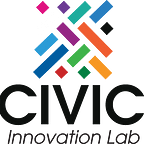Storytelling and Cultural Preservation
Stories are collections of our experiences. Stories represent our collective memory. Before writing ever became a thing, knowledge of history was transmitted to younger generations through compelling narratives. Societies preserved their heritage through the oral tradition of storytelling, passing down cultural values from one generation to the next. The elements of emotional appeal and personal experience often incorporated into storytelling makes it a powerful method of instruction and education. Beliefs, norms, customs, social values, and cultural experiences are passed down through generations.
We engage with others through stories, and storytelling is a lot more than just a recitation of facts and events; it provides a timeless link to ancient traditions, legends, myths, and ancestry. Stories are how people learn and remember. Facts and figures are quickly forgotten, but emotions and memories endure. Stories teach us about behaviors and consequences and create a shared understanding of the world in and outside our culture. If the shared understanding conveyed through stories supports, say, violence and corruption, it would soon define and shape cultural values that become acceptable over time. In essence, stories keep cultures alive.
Every culture has a story to tell. These stories form the basis for how we think about the world and how we live our lives. In pre-colonial Nigerian societies, storytelling was used by narrators, educators, and parents to teach social values, to pass down moral instructions, and to preserve their history and identity. Chinua Achebe, for instance, provided valuable, concrete historical information about life and culture in pre-colonial Igbo society through the compelling narratives in his magnum opus, Things Fall Apart, debunking the skewed version of European storytellers that Africa had no cultural institution before colonialism.
Once upon a time, when oral storytelling ruled, poetry was a popular method of storytelling. Poetic devices such as rhythm, rhyme, and repetition made stories easier to memorize so they could be carried through long distances and handed down through generations. But as civilization developed and new technologies advanced, the methods of storytelling also evolved to reflect the times — becoming more modular and tailored, more participatory, and more engaging than just the printed word.
Digital storytelling, an advancement from traditional oral and written methods, is a technique that combines audio, images, and video clips to tell stories, bringing narratives to life and delivering experiences that are culturally enlightening as well as entertaining and memorable. Digital innovation has made possible new kinds of interactions, visitor expectations have broadened, and competition for time and resources has become increasingly intense. The impact of this evolution on museum practices has been far-reaching, as technology is increasingly becoming central to the museum experience.
An article on the National Endowment for the Humanities website reads:
“Books on a wall, even when crafted by the most scholarly experts in a given field, sometimes fail to reach audiences. [Digital] storytelling, on the other hand, can become a powerful way to convey Humanities’ interpretation of art, science, design, and history to a wide range of museum audiences.”
With digital tools such as VR headsets, iPads, touch screens, haptic interfaces, and, more recently, the Tilt Brush, ATD’s Discovery Museum provides its visitors with detailed information and customized viewing experiences.
Technology presents so many dynamic opportunities to create new content. It has made storytelling and information generation a lot easier, hence the proliferation of new and innovative storytelling techniques. Given the necessity of digital technology, its success in establishing connections and improving interaction with art, and our ever willingness to embrace new forms of innovation, Art Tech District invests heavily in modern technology to enhance and deliver immersive digital stories. We apply digital media thoughtfully and conscientiously to make our collections more relatable and deepen visitors’ experience.
